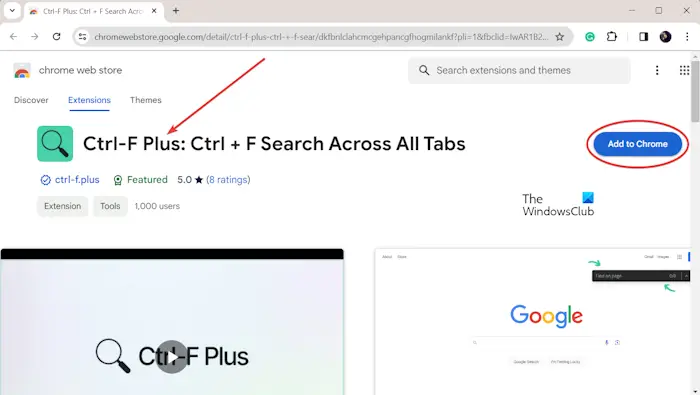 Web Front-end
Web Front-end HTML Tutorial
HTML Tutorial HTML Tutorial: Collection of Commonly Used HTML Tags (6)_HTML/Xhtml_Web Page Production
HTML Tutorial: Collection of Commonly Used HTML Tags (6)_HTML/Xhtml_Web Page Production相关文章:初学者接触HTML了解一些HTML标记(5)
这些所介绍的HTML标记不一定完全符合XHTML规范。各位在实际布局时应有所取舍,如:B标记,FONT标记,都是不符合XHTML规范的。
1、基本TAG元素
--------------------------------------------------------------------------
文件格式 (HTML文件的开头与结尾)
主题
文头区段 (描述文件,如「主题」)
内文区段 (内容所在)
2、与结构相关的元素
--------------------------------------------------------------------------
标题
标题对齐
区段
区段对齐
Short Quotes
and
are for some quoted files if the quoted part is not long. Then you can consider using this tag, which is the new syntax of HTML3.0.
Citation section
(usually indented when displayed) blockquote is used to indicate that the document in the area refers to a person or information in a document. Commonly quoted text is marked using
and. Then most browsers will represent it in another way when reading these words. This representation simply reminds readers that this is a reference to someone else.
Emphasis (usually shown in italics)
Strong emphasis (usually shown in bold) This character that particularly emphasizes the tone is STRONG, which is the same as
EM They are all used to strengthen the tone. Most browsers use boldface to represent words marked with and .
Quotation sentences (usually shown in italics) Use and to mark quotes from others
Program source code
to mark some related words, and the method used is also to use
与 to mark related words. Program output sample without modification in HTML, if you want to print out the syntax of HTML
. Then readers may need to use some special techniques to print these characters. Outside these characters, readers can use the SAMP
symbol to mark them. The characteristic of this label is that the marked text will be represented by a fixed width.
Keyboard input KBD This tag is usually used to inform readers which words can be typed. These words marked as
KBD are usually represented by fixed-width bold fonts. But some browsers only use fixed-width characters.
Program Variables For some words that may change, HTML provides a
VAR tag to display it. This tag means variables or words that may be easily changed, etc. They can be marked using and
. This alerts the user that these variables are subject to change.
Definition (Some browsers do not have this function) If the reader uses some definition words in HTML
. Then readers can consider using the DFN tag. If the reader uses Mosaic browser. Then the text marked by and
will be in italics. Other browsers may not.
Author address
Large letters
Small letters
Language
In a document, if you use two If there are more than one language, you can use
Author (AU)
HTML 3.0.
Personal
(PERSON) In many indexing programs, the program sometimes displays some information pages, and when displaying these information pages. If some individuals are mentioned by name. Then you can use
A word made up of several words (ACRONYM)
In English, some words are made up of several words. If readers encounter such words, readers may consider using and
tags to specifically bracket them. Although this is new syntax in HTML3.0. But for those of us who use Chinese, such a grammar is not very helpful.
The abbreviation (ABBREV) is the same as ACRONYM. There are many abbreviations in English. HTML 3.0
also has a new tag for these abbreviations. This new tag is called
Insertion (INS) In HTML files, if a certain word is inserted into an original document, readers can consider using and
to mark these words. This will make it easier for readers to know whether this document has been revised when checking it. Of course, this syntax is also new in HTML 3.0
.
Delete (DEL) This syntax is used to tell readers that certain words will be deleted, or some parts about deletion. This kind of new tag also appears in HTML3.0.
3. TAG elements related to display mode
---------------------------------- ---------------------------------------
Bold
Italics
Underline (Some browsers do not have this feature)
Strikethrough
Strikethrough
Subscripts
Superscripts
打字机体 (空白字元与其他文元之宽度相同的字体)
依据预定格式 (保持文字间的相对位置)
预定格式的宽度 (以字元计)
对中
闪烁
字体大小 (由 1到 7)
改变字体大小
基本字体大小
字体颜色
指定字形
多栏位
栏位内文与边缘间隔
栏位宽度
留白
留白型态
留白大小
留白尺寸
留白位置
4、超文本连结与图形元素
--------------------------------------------------------------------------
连结指定URL
连结到锚点 (锚点在另一份文件)
(锚点在同一文件)
连结到指定之FRAME TARGET="HTML Tutorial: Collection of Commonly Used HTML Tags (6)_HTML/Xhtml_Web Page Production|_blank|_self|_parent|_top">
设定「锚点」
正向关连 (有些浏览器无此功能)
反向关连 (有些浏览器无此功能)
显示图形

图形位置

图形位置

替代图形文字
 (如果无法显示图形而显示的文字)
(如果无法显示图形而显示的文字) 可点选图形
 (需要与.map文件配合)
(需要与.map文件配合) 客户端端可点选图形

点选图名称
指定可点选区域
图形尺寸
 (以象素为单位)描述图形显示的宽度和高度。
(以象素为单位)描述图形显示的宽度和高度。 边线大小
 (以象素为单位) 图形外的框线宽度。
(以象素为单位) 图形外的框线宽度。 四周留白
 (以象素为单位)
(以象素为单位) vspace,hspace描述图形和文字的垂直和水平间隔。
低解析度图形
 用户端定时更新 HTTP-EQUIV="Refresh" CONTENT="?; URL=URL">
用户端定时更新 HTTP-EQUIV="Refresh" CONTENT="?; URL=URL"> Plug-in 物件
 如何在Chrome和Edge的所有选项卡中搜索文本Feb 19, 2024 am 11:30 AM
如何在Chrome和Edge的所有选项卡中搜索文本Feb 19, 2024 am 11:30 AM本教程向您展示了如何在Windows的Chrome或Edge中找到所有打开的标签页上的特定文本或短语。有没有办法在Chrome中所有打开的标签页上进行文本搜索?是的,您可以使用Chrome中的免费外部Web扩展在所有打开的标签上执行文本搜索,无需手动切换标签。一些扩展如TabSearch和Ctrl-FPlus可以帮助您轻松实现这一功能。如何在GoogleChrome的所有选项卡中搜索文本?Ctrl-FPlus是一个免费的扩展,它方便用户在浏览器窗口的所有选项卡中搜索特定的单词、短语或文本。这个扩
 抖音怎么带标签引流?平台什么标签最容易引流?Mar 22, 2024 am 10:28 AM
抖音怎么带标签引流?平台什么标签最容易引流?Mar 22, 2024 am 10:28 AM抖音作为一款备受欢迎的短视频社交平台,拥有着庞大的用户群体。对于抖音创作者来说,带标签引流是一种有效提升内容曝光度和吸引关注的方法。那么,抖音怎么带标签引流呢?本文将为您详细解答这个问题,并介绍相关技巧。一、抖音怎么带标签引流?发布视频时,要确保选择与内容相关的标签。这些标签应涵盖视频的主题和关键词,以便让用户通过标签更容易找到您的视频。利用流行标签是增加视频曝光的有效方法。研究当前热门标签和趋势,将其巧妙地融入视频描述和标签中。这些热门标签通常具有更高的曝光度,能够吸引更多观众的关注。3.标签
 抖音标签后面的时钟是什么?怎么给抖音账号打标签呢?Mar 24, 2024 pm 03:46 PM
抖音标签后面的时钟是什么?怎么给抖音账号打标签呢?Mar 24, 2024 pm 03:46 PM在浏览抖音作品时,我们经常能看到标签后面有一个时钟图标。那么,这个时钟到底是什么呢?本文将围绕“抖音标签后面的时钟是什么”展开讨论,希望为您的抖音使用提供一些有益的参考。一、抖音标签后面的时钟是什么?抖音会推出一些热门话题挑战,用户参与时会在标签后看到一个时钟图标,这代表作品正在参与话题挑战,并显示挑战的剩余时间。对于一些具有时效性的内容,如节假日、特殊活动等,抖音会在标签后面附上时钟图标,提醒用户该内容的有效期限。3.热门标签:当某个标签变得热门时,抖音会在标签后面添加时钟图标,表示这个标签正
 学习canvas框架 详解常用的canvas框架Jan 17, 2024 am 11:03 AM
学习canvas框架 详解常用的canvas框架Jan 17, 2024 am 11:03 AM探索Canvas框架:了解常用的Canvas框架有哪些,需要具体代码示例引言:Canvas是HTML5中提供的一个绘图API,通过它我们可以实现丰富的图形和动画效果。为了提高绘图的效率和便捷性,许多开发者开发了不同的Canvas框架。本文将介绍一些常用的Canvas框架,并提供具体代码示例,以帮助读者更深入地了解这些框架的使用方法。一、EaselJS框架Ea
 钉钉app外部联系人标签怎么删除Feb 24, 2024 am 08:20 AM
钉钉app外部联系人标签怎么删除Feb 24, 2024 am 08:20 AM钉钉app外部联系人标签怎么删除?钉钉中是可以删除外部联系人标签的功能,但是多数小伙伴不知道钉钉外部联系人标签如何的删除,接下来就是小编为用户带来的钉钉app外部联系人标签删除方法图文教程,感兴趣的用户快来一起看看吧!钉钉app外部联系人标签怎么删除1、首先打开钉钉APP,主页面中点击如下图所示的【管理】功能;2、然后进入到企业管理的界面,找到其中的【外部联系人】;3、接着在外部联系人设置功能页,选择【标签管理】服务;4、之后在联系人标签主页面,选择你需要删除的标签组类型;5、最后点击标签组红色
 深入了解HTML中的video元素Feb 24, 2024 pm 08:18 PM
深入了解HTML中的video元素Feb 24, 2024 pm 08:18 PMHTML中video视频标签详解HTML5中的video标签是一种用于在网页上播放视频的标签。它可以使用不同的格式来呈现视频,例如MP4、WebM、Ogg等等。在本篇文章中,我们将详细介绍video标签的使用方法,并提供具体的代码示例。基本结构下面是video标签的基本结构:
 html5标签head和header有什么区别Jan 17, 2022 am 11:10 AM
html5标签head和header有什么区别Jan 17, 2022 am 11:10 AM区别:1、head标签用于定义文档头部,它是所有头部元素的容器,而header标签用于定义文档的页眉(介绍信息);2、浏览器都支持head标签,而旧版本浏览器均不支持header标签,需要IE9+以上浏览器才支持header标签。
 Spring注解大揭秘:常用注解解析Dec 30, 2023 am 11:28 AM
Spring注解大揭秘:常用注解解析Dec 30, 2023 am 11:28 AMSpring是一个开源框架,提供了许多注解来简化和增强Java开发。本文将详细解释常用的Spring注解,并提供具体的代码示例。@Autowired:自动装配@Autowired注解可以用于自动装配Spring容器中的Bean。当我们在需要依赖的地方使用@Autowired注解时,Spring将会在容器中查找匹配的Bean并自动注入。示例代码如下:@Auto


Hot AI Tools

Undresser.AI Undress
AI-powered app for creating realistic nude photos

AI Clothes Remover
Online AI tool for removing clothes from photos.

Undress AI Tool
Undress images for free

Clothoff.io
AI clothes remover

AI Hentai Generator
Generate AI Hentai for free.

Hot Article

Hot Tools

ZendStudio 13.5.1 Mac
Powerful PHP integrated development environment

MinGW - Minimalist GNU for Windows
This project is in the process of being migrated to osdn.net/projects/mingw, you can continue to follow us there. MinGW: A native Windows port of the GNU Compiler Collection (GCC), freely distributable import libraries and header files for building native Windows applications; includes extensions to the MSVC runtime to support C99 functionality. All MinGW software can run on 64-bit Windows platforms.

Notepad++7.3.1
Easy-to-use and free code editor

VSCode Windows 64-bit Download
A free and powerful IDE editor launched by Microsoft

SAP NetWeaver Server Adapter for Eclipse
Integrate Eclipse with SAP NetWeaver application server.




